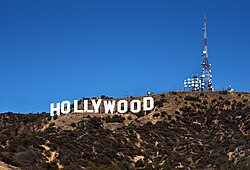An editor has nominated this article for deletion. You are welcome to participate in the deletion discussion , which will decide whether or not to retain it. |

A filming location is a place where some or all of a film or television series is produced, instead of or in addition to using sets constructed on a movie studio backlot or soundstage. [1] In filmmaking, a location is any place where a film crew will be filming actors and recording their dialog. A location where dialog is not recorded may be considered a second unit photography site[ citation needed ]. Filmmakers often choose [ citation needed ]to shoot on location because they believe that greater realism can be achieved in a "real" place; however, location shooting is often[ citation needed ] motivated by the film's budget. Many films shoot interior scenes on a sound stage and exterior scenes on location.






